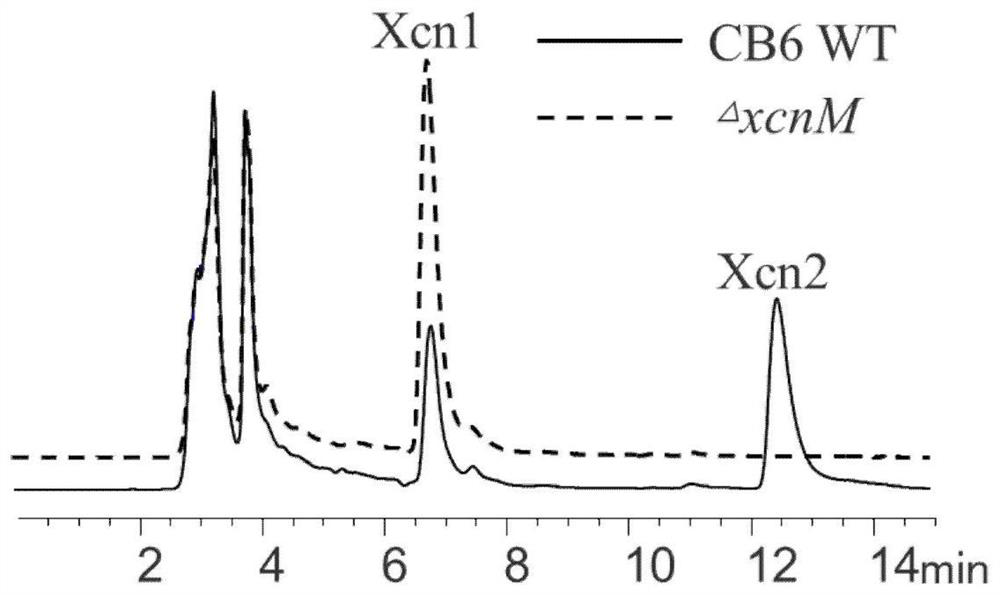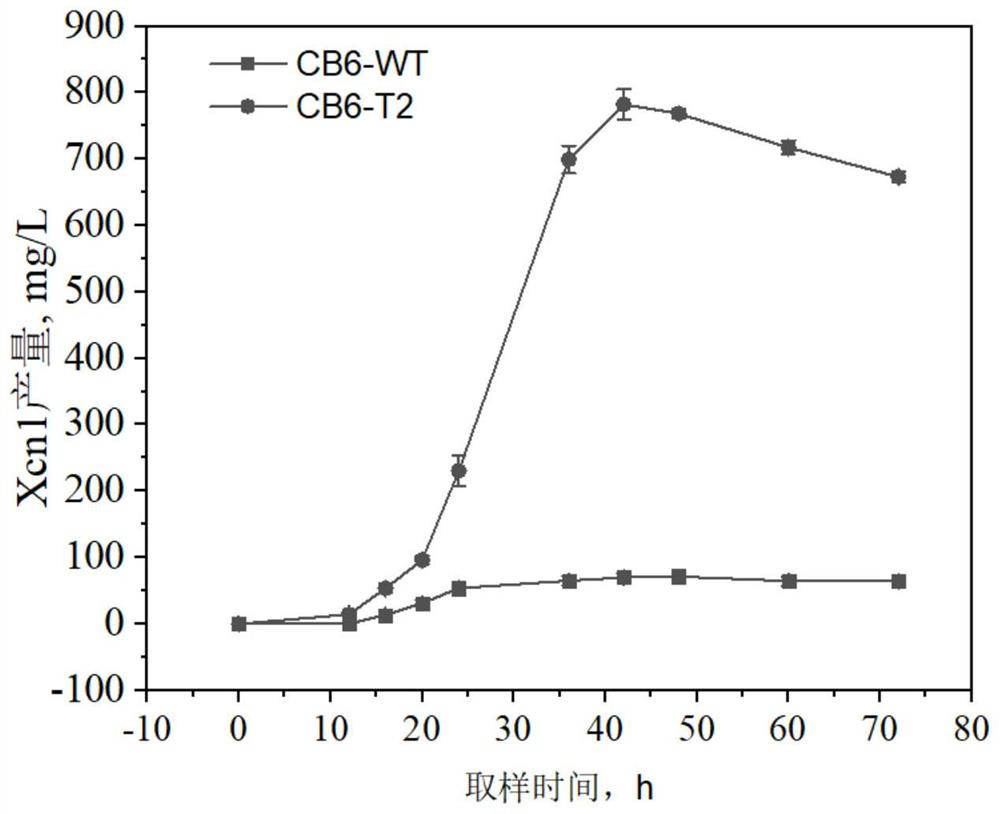Xenorhabdus nematophila producing Xcn1 in high yield and application thereof
A nematophile, xcn1 technology, applied in the field of microorganisms, can solve problems such as low activity, low Xcn1, and decreased Xcn1 production
- Summary
- Abstract
- Description
- Claims
- Application Information
AI Technical Summary
Problems solved by technology
Method used
Image
Examples
Embodiment Construction
[0011] For further illustrating the present invention, specifically illustrate in conjunction with following examples:
[0012] Xenorhabdus nematophila (Xenorhabdus nematophila) CB6 bacterial strain involved in the present invention is a known strain, which is registered and preserved in the General Microbiology Center (CGMCC) of China Microbial Culture Collection Management Committee, address: Beichen West, Chaoyang District, Beijing No. 3, No. 1 Road, Institute of Microbiology, Chinese Academy of Sciences, Zip Code: 100101, strain number CGMCC No.1173.
[0013] The present invention provides a high-yield Xcn1 Xcn1 pathogenic bacteria CB6-T2, using CGMCC No.1173 Xcn1 pathogenic bacteria CB6 as the starting strain, first transforming the Xcn1 gene cluster in the CB6 wild-type strain to mediate The Xcn1-to-Xcn2 conversion enzyme gene xcnM deletion mutation blocks the degradation conversion of Xcn1. Then the promoter of the first gene xcnA of the Xcn1 synthetic gene cluster was...
PUM
 Login to View More
Login to View More Abstract
Description
Claims
Application Information
 Login to View More
Login to View More - Generate Ideas
- Intellectual Property
- Life Sciences
- Materials
- Tech Scout
- Unparalleled Data Quality
- Higher Quality Content
- 60% Fewer Hallucinations
Browse by: Latest US Patents, China's latest patents, Technical Efficacy Thesaurus, Application Domain, Technology Topic, Popular Technical Reports.
© 2025 PatSnap. All rights reserved.Legal|Privacy policy|Modern Slavery Act Transparency Statement|Sitemap|About US| Contact US: help@patsnap.com


